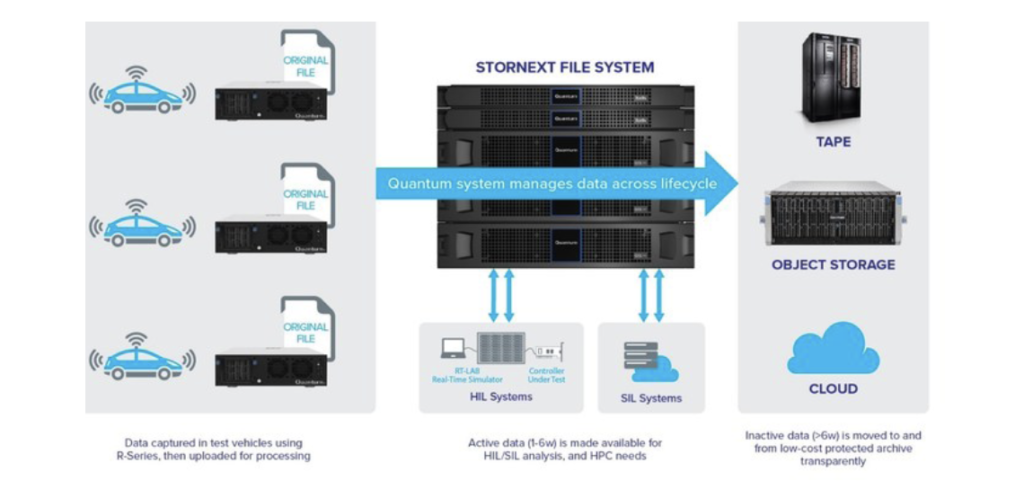Quantum Corporation says it has released a new end-to-end reference architecture for advanced driver-assistance systems (ADAS) and autonomous driving (AD) systems. By enhancing the acquisition, movement, storage and curation of the data necessary to develop autonomous vehicle software, the unique architecture is claimed to address the specific needs of every stage of ADAS/AD development.
“Although still relatively nascent, organizations developing autonomous vehicles are at a crossroads,” said Jamie Lerner, president and CEO of Quantum. “The volume of data being captured is increasing exponentially, presenting an urgent need for speed, capacity and cost-efficiency in the data management lifecycle. As the experts in unstructured data capture, storage, management and enrichment, we are leading the way in delivering a complete portfolio of end-to-end solutions and lab-proven technology that delivers the industry’s best performance, capacity and scalability – all requirements for ADAS/AD solutions – at a fraction of the cost. This new reference architecture empowers ADAS developers to build the self-driving vehicles of tomorrow.”
Test vehicles typically capture terabytes of sensor data per hour generated by multiple video cameras, lidars and radars. ADAS/AD development systems rely on collecting and processing these large amounts of unstructured data to build sophisticated machine learning (ML) models and algorithms, requiring intelligent and efficient data management. By utilizing the new end-to-end reference architecture, the company says that developers will be able to take advantage of its complete portfolio of end-to-end data management solutions.
Quantum says that its R6000 is an ultra-fast automotive and mil-spec edge storage device explicitly developed for high-speed data capture in challenging, rugged environments including cars, trucks, airplanes and other moving vehicles. It provides the large data storage capacity necessary for the in-vehicle logger to store the collected sensor data for an extended period, all in a small form factor that makes it well suited for self-driving test vehicles. Once data is captured, the R6000 removable storage canister enables quick data offload and on-the-road replacement, allowing cars to stay in service and reducing vehicle downtime.
Data can be uploaded to the company’s StorNext File System for processing. Quantum claims that the system has demonstrated the fastest overall response times for video data using independent benchmark testing, and can process thousands of concurrent streams at high throughput. Furthermore, the software includes a policy engine with options to place and manage data on NVMe, HDD, object storage, cloud and tape. This unique data management capability enables full and efficient use of the analytics infrastructure across multiple tiers.
Quantum says that once the ML model training and verification is complete and new models developed and deployed, the massive data sets required for future development can be retained on low-cost storage, providing the right balance between the highest performance and best economics.
“Autonomous vehicle manufacturers are capturing massive amounts of roadway data, and then using that data to design, develop and validate algorithms that can power self-driving cars. The challenge they’re grappling with is how to effectively extract insights, integrate with other pieces of their architecture and retain that data for longer periods of time,” said Graham Cousens, ADAS/autonomous vehicle solutions practice lead at Quantum. “These are challenges that Quantum has been solving for over 40 years in other sectors. Based on solutions that have been proved to outperform the competition in lab testing – driven by the powerful StorNext File System and our ultra-fast automotive and mil-spec R6000 in-vehicle data storage device – this new reference architecture is set to streamline and power the future of autonomous vehicle development.”


